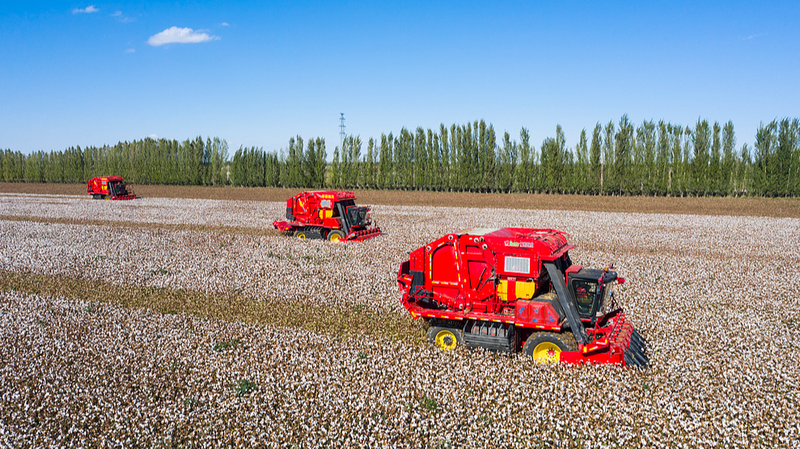For the 32nd year running, the Xinjiang Uygur Autonomous Region remains the powerhouse of cotton production on the Chinese mainland. In 2024, Xinjiang’s farms churned out an impressive 5.69 million tonnes of cotton, representing 92.3% of the country’s total output, according to a white paper released by the State Council Information Office.
Behind this record is a near-complete shift to mechanization: plowing, planting, and harvesting are 97% automated across the region. From remote desert plains to fertile river valleys, high-tech machinery and data-driven farming methods are powering yields, reducing waste, and boosting quality for both domestic and global markets.
Xinjiang’s focus on modernizing its agricultural infrastructure aligns with broader national strategies to secure stable raw materials and build resilient supply chains. By leveraging natural resources, advanced machinery, and localized research, the region is developing a uniquely integrated industrial system—from farm to textile mill—that positions China at the forefront of sustainable textiles.
For young global citizens and business innovators, Xinjiang’s cotton story offers a glimpse into how smart agriculture and digital solutions can reshape traditional industries. As consumers demand more sustainable fabrics and ethical supply chains, the region’s mechanization model could serve as a blueprint for cotton belts around the world.
Reference(s):
Xinjiang remains China's top cotton producer for 32 consecutive years
cgtn.com
